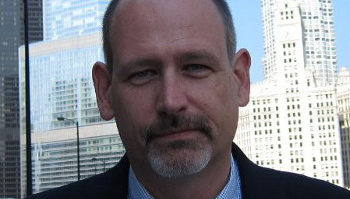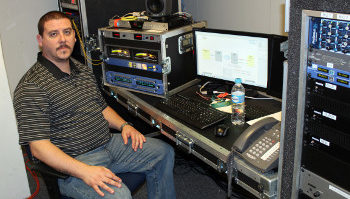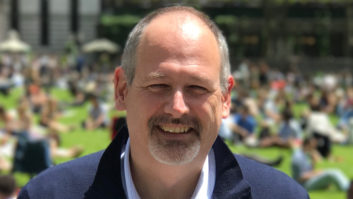
Conrad Trautmann is chief technology officer for program syndicator and radio services provider Westwood One. He has also worked as the market director of engineering for Cox Radio’s Long Island, N.Y., stations and before that Cox’s Syracuse, N.Y., cluster. He began his career as chief engineer for WEBE(FM) in Westport, Conn. He now oversees a program syndication distribution network along with running a number of high-profile projects like the Olympics, Grammy Awards, NCAA basketball and the Super Bowl.
TechBytes: What is the biggest change that you’ve seen in your job since you started broadcast engineering in college?
Conrad Trautmann: IP distribution of audio has to be the biggest change on multiple levels. Audio over IP is changing the way audio is routed within the stations and studios. It’s now the primary method of backhauling audio to the network technical operations centers and we use it as the backbone of our satellite distribution systems. In addition, AM and FM radio stations now have a competitor they never had before with IP distribution of audio to desktop and mobile devices via the Internet or cellular data networks. When I began my career in broadcasting in 1981, there weren’t even personal computers at the stations yet and no cellphones or Internet.
TechBytes: Do you miss the “hands-on” old days of tubes, circuits, hand wiring, compared to today’s increasingly IT-dominated broadcast engineering with software, Cat cables and routers?
Trautmann: Yes and no. I recently helped our Purchase, N.Y., TOC engineering team with an installation project and the entire thing consisted of mounting equipment in racks and connecting multiple Cat-5 cables to a Cisco switch. Not an XLR connector or soldering gun in sight. The hardest part was picking the correct length of cable to go between the patch panels and the switch ports. All of the audio and control was routed via IP. It was much easier and faster to accomplish our project using the new technology, so in that regard I don’t miss the stripping of cables and soldering connectors. But it did seem weird to me to do the entire thing with only Cat-5 patch cables.
TechBytes: You’ve handled marquee events such as the Olympics. What is the first piece of advice or best piece of advice you’d give to a colleague who’s about to take on a high-profile multimillion dollar event like that?
Trautmann: Always have a “Plan B.” With all of the high-profile programs we broadcast, we need to have alternate ways to get something on the air. If you’re using T1s or MPLS for the main backhaul, be sure to have an ISDN or Internet as a backup. Have evergreen audio stored at the TOC to switch to in case of a failure from the remote site. Have the ability to go live from an alternate location. Have a backup uplink site. At the end of the day, the most important thing to our affiliates is to have programming on the air when they expect it. We do everything in our power to be sure we have alternate and backup plans so we meet those expectations.
TechBytes: Besides being a traditional broadcast engineer, you’ve become the chief technology officer of a major programming syndicator. What challenges does that job create that your radio station colleagues don’t encounter?
Trautmann: At the network, anything you do to any system can potentially affect hundreds or even thousands of radio stations. As a station engineer, when you have a problem with a transmitter, it’s usually affecting only one radio station. Granted, that can affect many listeners, but it’s only one signal. A problem with our uplink transmitter can affect the programming on as many as 8,000+ radio stations at one time. Having a single automation computer fail for one program can affect 500 or more affiliates at once. Everything is multiplied. Losing a spot can also mean the loss of a lot of revenue, too.
TechBytes: Is the day approaching when the job “broadcast engineer” will be retired or be lumped in with “IT professional”?
Trautmann: Absolutely. We’ve been replacing retiring broadcast engineers with people who have Cisco certifications. So much of what we do depends on knowledge of networking, routing and switching now that it’s inevitable that the broadcast engineer and IT jobs will merge or become a hybrid of both. We have created positions at the network called “Broadcast IT,” which are people who support the broadcast systems that are IT-based.










